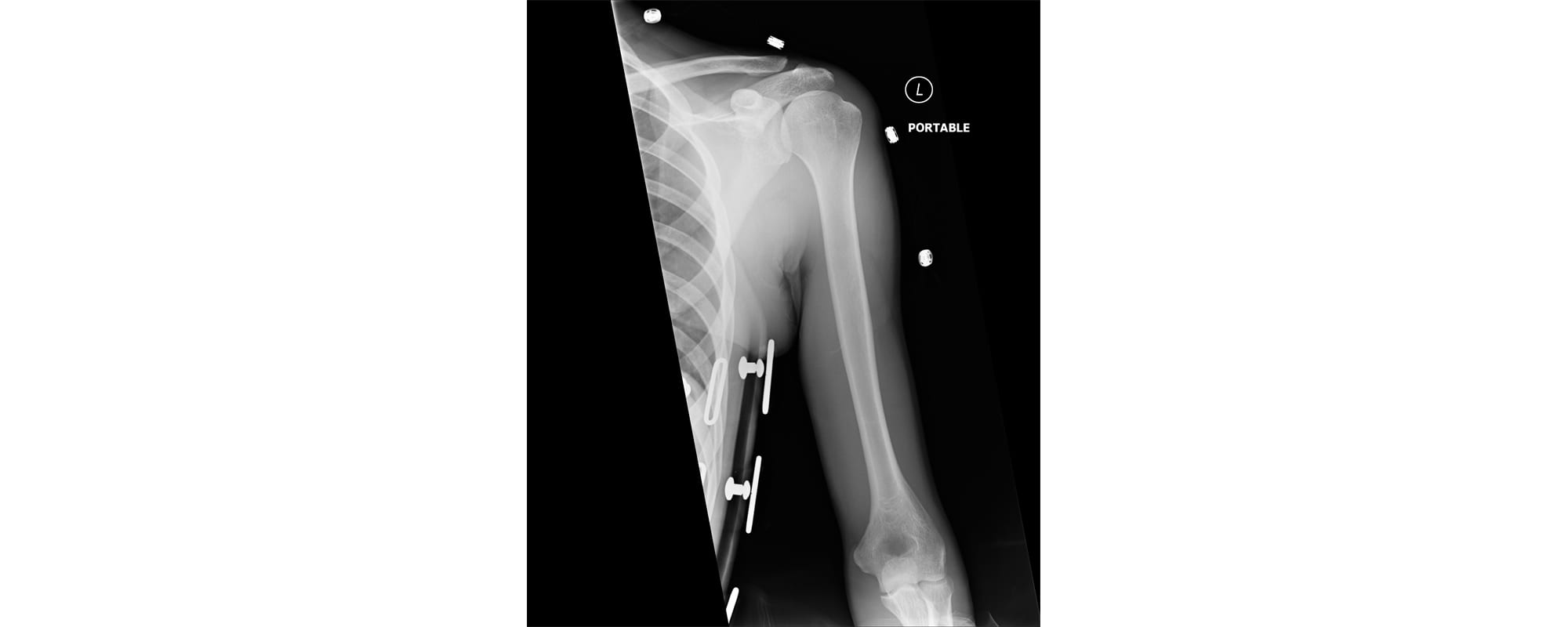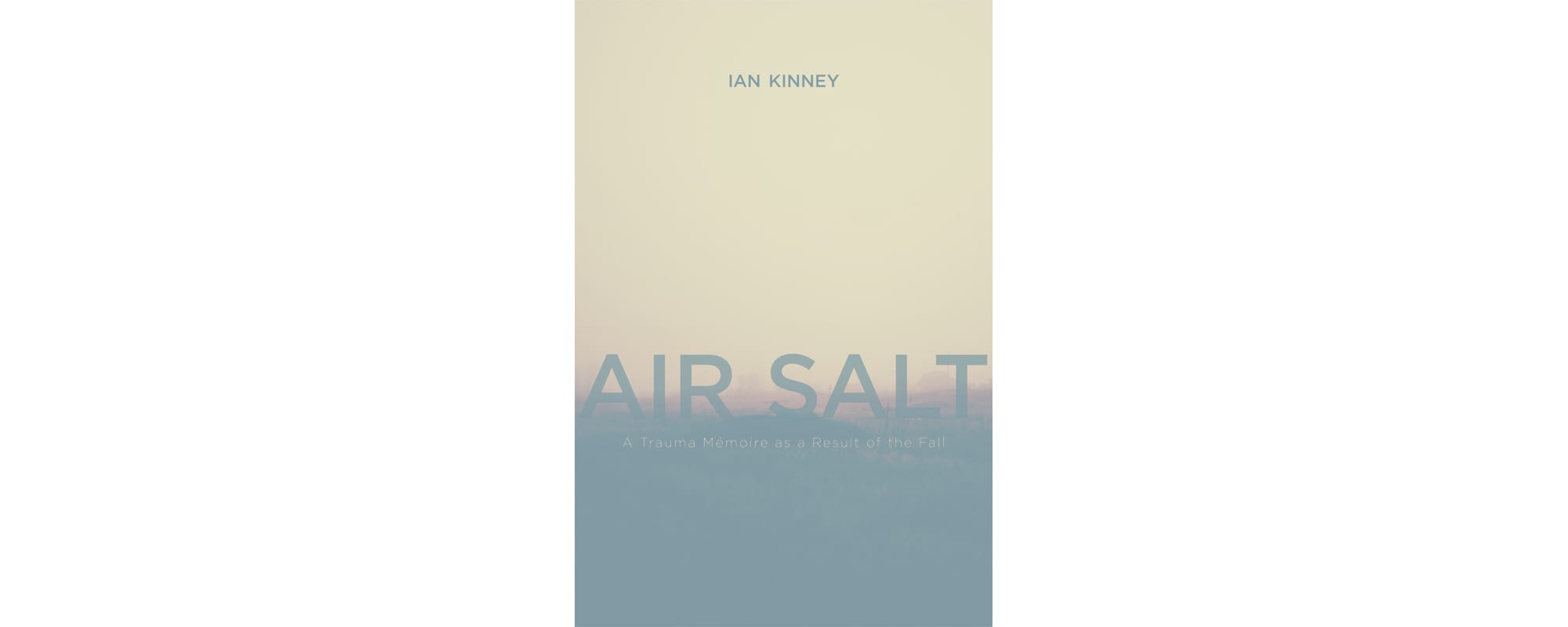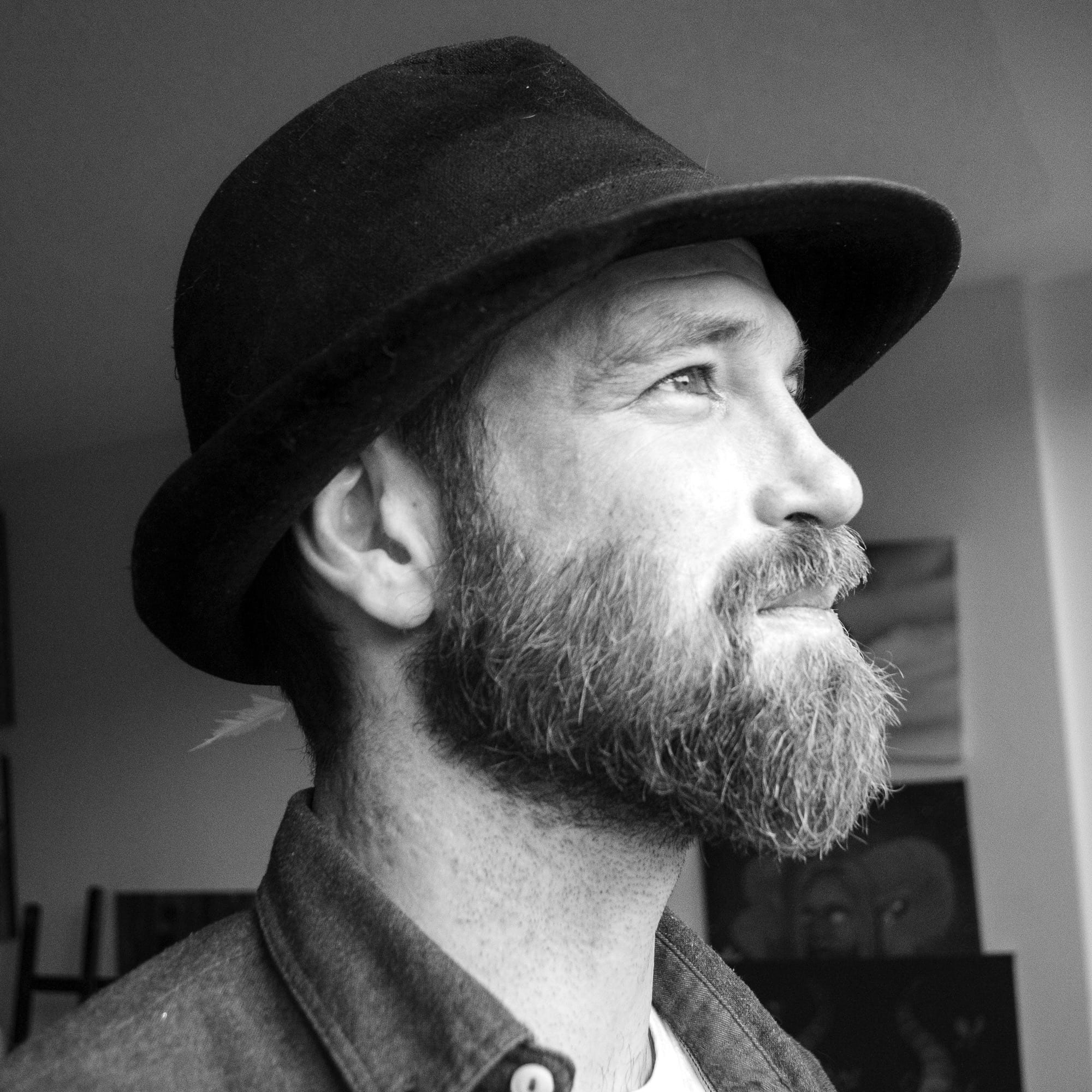The story, as Ian Kinney has been told, is that he jumped from his friends’ seventh-storey balcony after drinking mushroom tea. He doesn’t pretend to know more than that.
He reflects this uncertainty in Air Salt: A Trauma Mémoire as a Result of the Fall (University of Calgary Press), his debut book of poetry. The Calgary author uses mostly found text, including greeting cards, hospital brochures, and his own medical records, to compose verses that recount his accident and subsequent recovery in a style that doesn’t attempt to make linear sense. It’s the style that most authentically captures what Kinney experienced.
When Kinney, then 22, awoke from a month-long coma, his leg was in a cast and his body was in a brace. He had no memory of the fall. “I could feel that I was broken, but I couldn’t understand why,” he says now, 11 years later. “My brain was injured in such a way that I would go to sleep and wake up confused as to why I was in my bed and why I couldn’t move my leg or my back.” He’d often forget things that had happened just five or 10 minutes earlier.
While in recovery, he was encouraged by his mentor, the experimental poet Christian Bök, to adopt a writing project. At the same time, Kinney’s occupational therapist had recommended he keep a journal of his daily activity as a memory aid. That journal became one of his found sources for Air Salt. The collection marks the 12th title in UCP’s Brave & Brilliant series, which publishes unique voices writing in innovative styles across form and genre.
 “I was definitely encouraged by my [master’s thesis] supervisor [Robert Majzels] to resist producing a conventional narrative,” Kinney says. “I was encouraged to speak from a position that was more genuine to my situation, which is far more disorienting and a lot more destabilized.”
“I was definitely encouraged by my [master’s thesis] supervisor [Robert Majzels] to resist producing a conventional narrative,” Kinney says. “I was encouraged to speak from a position that was more genuine to my situation, which is far more disorienting and a lot more destabilized.”
Part of Kinney’s research involved requesting his own medical records, binders filled with hundreds of pages coolly describing intimate details of his body and mind, notes such as “when bladder is overfull, he becomes very agitated” and “[patient] able to recognize problem but unable to provide appropriate problem solving skills to come to a solution.”
“I become this clinical collection of fragments and bodies and behaviours that have just been charted and listed,” Kinney says. “I was re-
examining my experience in the hospital not from what I can remember, which is wholly distorted and incomplete, compared with what my medical records show, which is almost excruciatingly precise and rigorous in its descriptions of my body.”
His foggy journal entries and observational medical records are juxtaposed with his X-rays that show screws in his spine and tubes snaking through his torso. Sometimes Kinney places text over these images: “It’s simple you tell yourself / again and again you tell yourself / just sit up.”
 He also was charged with writing the book’s alt text, a written description of the images used for accessibility purposes. The results have unexpectedly bolstered the theme of feeling disconnected from your own mind and body.
He also was charged with writing the book’s alt text, a written description of the images used for accessibility purposes. The results have unexpectedly bolstered the theme of feeling disconnected from your own mind and body.
“I find myself repeating again and again, ‘this is an X-ray of my upper body,’ ‘this is an X-ray of my lower legs,’ ‘this is an X-ray of my abdomen,’ ‘this is an X-ray of my ribs,’ ‘this is an X-ray of my heel and ankle,’” he says. “It becomes so monotonous that it no longer affects me the way it might affect others.”
Today, Kinney lives with a traumatic brain and spinal-cord injury. “I manage chronic pain and arthritic nerve pain in my lower body,” he says. “I maintain my health through a rigorous self-care routine that involves lots of activity, rest, and support from my communities.”
He questions the tendency in trauma literature to tell a coherent story that explains an experience. “That to me is an extension of this medical impulse to frame an injury and treat it directly and have this acute process be resolved. I don’t think that’s how trauma works.”
Even now that the work is published, Kinney intends to keep revising it and writing further about his injuries. “There is a certain impossibility in what this process has set me out to [do],” he says. “But there is also a certain impossibility of me being alive right now.”
Ian Kinney photo by Robyn Chmelyk

 Contact us via email
Contact us via email

